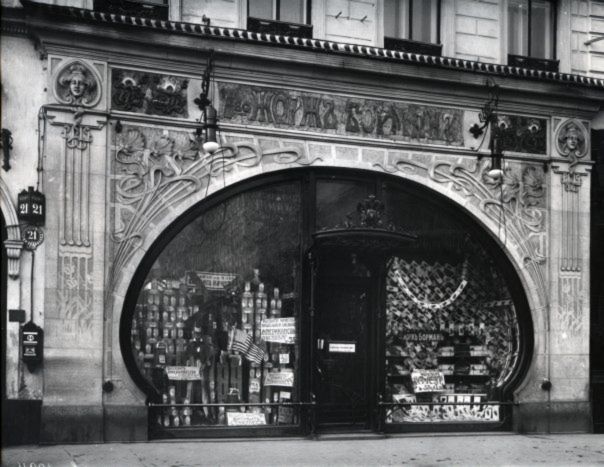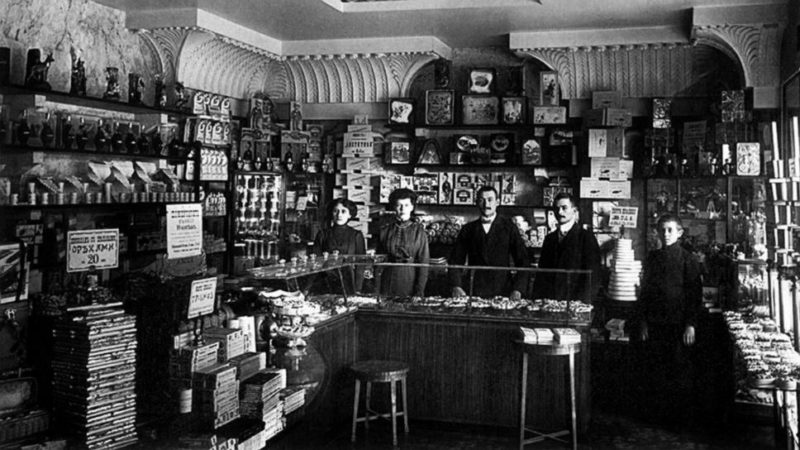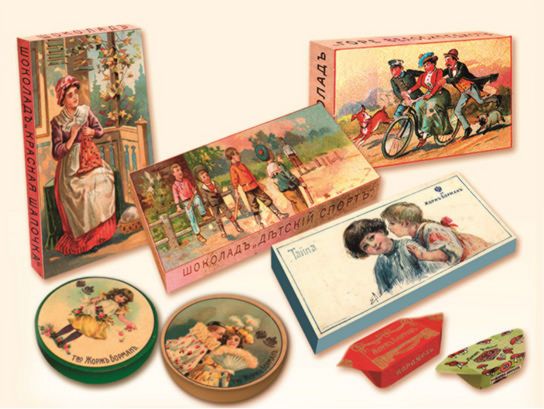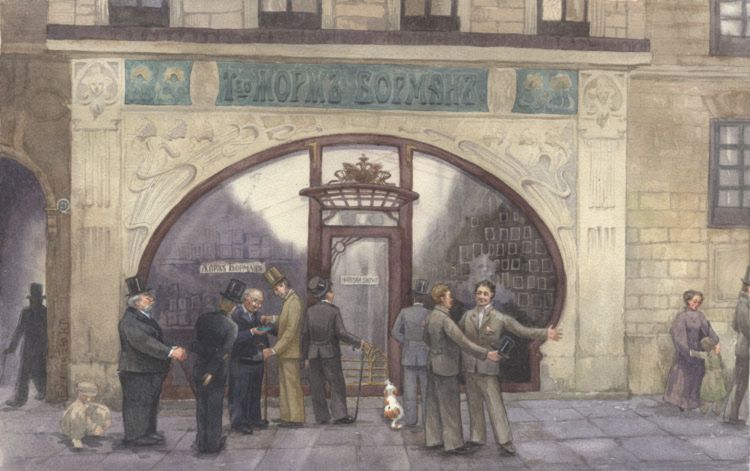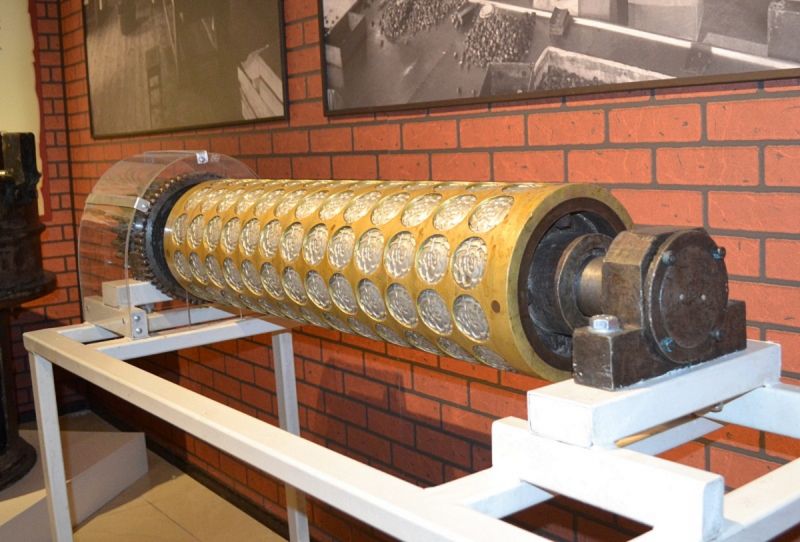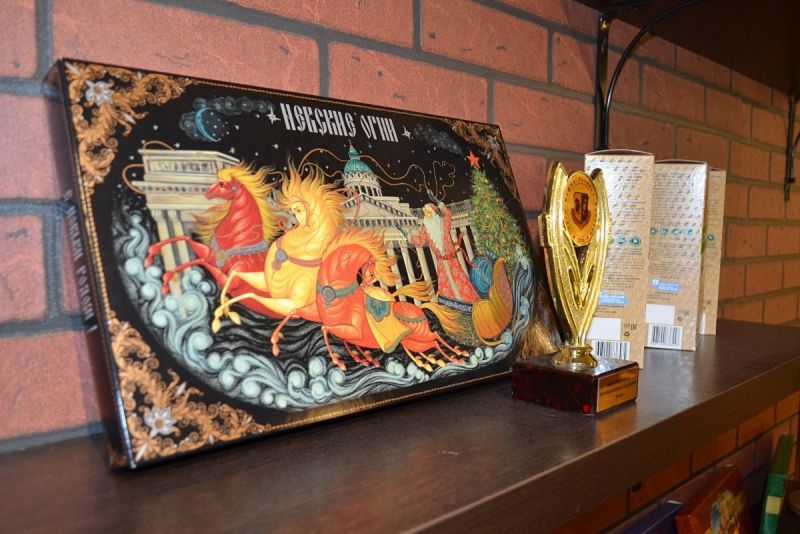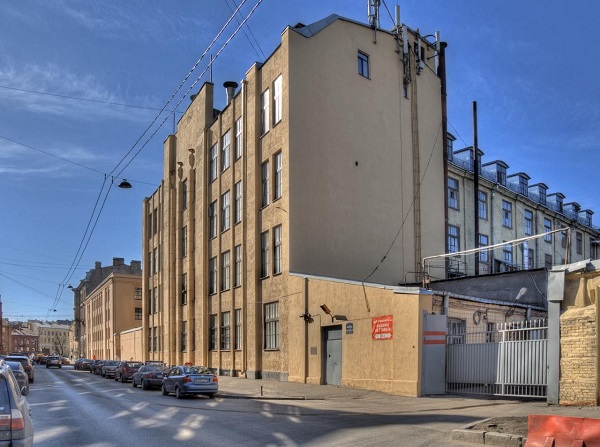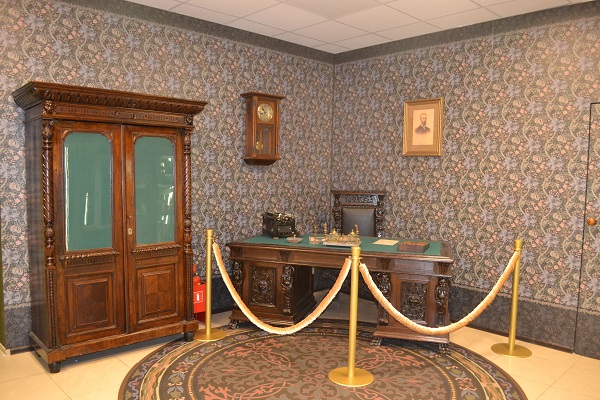The best confectionery factory of the Russian Empire
The history of the factory began in 1862, when George (Georges) Nikolayevich Borman founded the company "in a very modest size". A small shop was opened on Nevsky Prospect and there was a workshop with a hand machine for making chocolate with it. Then steam engines and huge workshops existed only in the dreams of the company's founder. For 8 years, the firm of J. Borman achieved such serious success that in 1870 at the All-Russian Exhibition in St. Petersburg its products received a bronze medal. After 2 years, factory buildings were built, especially for a chocolate factory, on Angliyskiy Prospect.
In 1876, the enterprise of Georges Borman was awarded the title "Supplier of the Court of His Imperial Majesty with the right to represent the state emblem on its labels." In that year, such a high assessment of the company's activities contributed to the expansion of the range of products manufactured by the factory, and the development of additional markets. The first wholesale warehouse of the company's products in the Apraksin dvor was opened, and two years later the wholesale warehouses were already opened in Moscow and Nizhny Novgorod. In the same year, 1878, Georges Bormann’s company received its first gold medal at the World Exhibition in Paris.
By 1895, G. N. Borman’s firm received two more gold medals from the exhibition in Paris and an honorary diploma with a medal from the exhibition in Chicago. The original design of the highest quality products with the stamp "ZhB" knew and loved the entire Russia. Competent workers on the best equipment made so much sweets, and the company's turnover grew so much that Georgy Nikolaevich Borman in 1895 decided to establish a partnership with a fixed capital of 300,000 rubles. The transition to the new organization of the enterprise, the proper distribution of the shares and the additional funds that emerged as a result of their sale — all this made it possible to expand production. In 1896 a biscuit factory was built in Petersburg. In Kharkov, the Partnership opened 2 factories for the production of chocolate and sponge cake.
In the same year, the Partnership participated in the All-Russian Exhibition in Nizhny Novgorod and received the highest award - the right to represent the state emblem. Since then, a double-headed eagle and figures of 1896 have appeared on all products of the Partnership. In addition to external regalia confirming the quality of products, there are also indicators of growth in the capital of the Partnership, whose fixed capital has increased from 300,000 to 1,100,000 rubles over five years.
The name of Georgiy Nikolaevich Borman was firmly associated in the minds of contemporaries not only with a huge amount of "ZhB" brand sweets, but also with competent and successful business management, with advanced production technologies. The products of the Georges Borman Factory Partnership were Russia's pride and represented the industry of the Russian Empire abroad with dignity.
Production in the factories of the Partnership was established in accordance with the latest achievements of technology. In addition to the set of small special machines, 8 large melanzhers worked in the chocolate departments, 24 large cocoa processing plants,the oil was wrung out by means of 4 hydraulic presses. For cooling chocolate used modern refrigerators. Biscuit factories were equipped with continuously operating furnaces. Caramel, fruit drops and marmalade were produced on 22 vacuum apparatus. Everywhere (in St. Petersburg and Kharkov) cooking on the hearth was replaced by cooking using water vapor.
About 800 workers were engaged in the maintenance of all factory machinery. The staff of stores and warehouses consisted of more than 100 people. Labor law was governed by an agreement between the workers and the board of the factory. Some of the clauses of the agreement show high social security of personnel. For example, due to illness, one hundred percent salary was paid for the first month and a half of the disease and 50% of the salary for the next month and a half. The same document provided for shorter pre-holiday days.
We should also tell about the design of products of Georges Bormann's factories. This is part of the image of the factory, lost in the years of Soviet power and being restored now. Products with leyma "ZhB" different brightness and originality of the solution labels. The design of many series of products was aimed at public education.
Factory J. Bormann produced Montpensier, on the labels of which were placed portraits of Russian writers (Gogol, Dostoevsky, Tolstoy) with quotations from their works. They produced thematic series of chocolate: Geographical Atlas, collection of beetles, Peoples of Siberia, Sports, etc.On the labels from the series “Paper crafts” a bright, colorful rooster was printed, and next to it was a paper copy with clear instructions for making such a paper doll. The names of the products themselves are of interest:"Coffee FROM HIMALAYSKOGO ZHYTA. HEALTHY and NUTRITIOUS DRINK "or, for example, chocolate" Triumph "with the signature:"at the world exhibitions 7 top awards (GRAND PRIX").
The palette of confectionery products from Georges Borman was rich: chocolate, sweets, waffles, fruit drops, biscuit, marmalade, coffee, caramel, biscuits, pastila, barberries and much more
The history of the factory of the Association of Georges Borman was interrupted in 1917. The revolution has changed not only the social system. The factory was nationalized. However, she was lucky, one of the few was not closed, although the range was reduced.
In 1922, the company was named the first state candy and chocolate factory named after the revolutionary Konkordia Samoilova. The factory named after K. Samoilova, having recovered from the economic chaos, produced approximately the same set of products; sweets, cookies, chocolate.
By 1992, the factory was transformed into AOZT Petrokond, not only the name changed: the equipment was modernized, an Italian line of packaging of candies in small packages appeared. From 1995 to 1998, when the American firm Kraft Foods International owned a controlling stake in Samoilovka, the factory bore the foreign name Kraft Jacobs Sushar Petroconf.
In 1999, the factory became part of the largest confectionery manufacturer in Russia - the OJSC "Moscow Confectionery Factory Red October", having bought out the factory’s shares from the Americans.
At present, the Samoilova confectionery factory (“Red October” /Krasny Oktyaber) has two main production halls: a waffle-cake and a marmalade candy. The production of the Samoilova factory is notable for a diverse assortment: cookies, chocolate products, marshmallow, marmalade, dragee, waffles - only about 100 items, well known in St. Petersburg and beyond. The use of the best natural raw materials, modern equipment and qualified personnel allows us to produce high-class products.
Chocolates from the factory. K. Samoilova is a great taste, impeccable quality, festive design and affordable prices. Candy buyers are well known: Nevsky Torch, Nuts in Chocolate, Cloves, Grilyazh in Chocolate, Leningrad.
The factory team is constantly working on expanding and updating the range, while carefully preserving the old recipes of Russian confectioners, whose products have been repeatedly praised at international exhibitions.
To learn more about St. Petersburg history, book a package tour.
Read more
- How to travel in Saint Petersburg without living your home
- Four of the ten best restaurants in the country are in St. Petersburg
- The first Holocaust museum in St. Petersburg
- A scientist from St. Petersburg created the biochronicle of Peter the Great.
- 10 interesting facts about Saint-Petersburg streets
